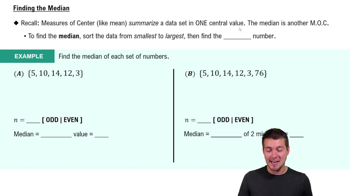Here are the essential concepts you must grasp in order to answer the question correctly.
Levels of Measurement
Levels of measurement refer to the nature of data and dictate the types of statistical analyses that can be performed. The four levels are nominal, ordinal, interval, and ratio. Nominal data categorize without a specific order, ordinal data have a defined order, interval data have equal intervals without a true zero, and ratio data have equal intervals with a true zero, allowing for meaningful comparisons of magnitude.
Recommended video:
Difference in Proportions: Hypothesis Tests Example 1
Continuous vs. Discrete Data
Continuous data can take any value within a range and are often measured, such as height or temperature. Discrete data, on the other hand, consist of distinct, separate values, often counted, like the number of students in a class. Understanding whether data are continuous or discrete helps in selecting appropriate statistical methods and visualizations.
Recommended video:
Visualizing Qualitative vs. Quantitative Data
Understanding Radiation Measurements
Radiation measurements, such as those in W/kg for cell phones, are typically ratio data because they have a true zero point and allow for meaningful comparisons of magnitude. This means that a measurement of zero indicates no radiation, and comparisons like 'twice as much radiation' are valid. Recognizing this helps in determining the appropriate statistical analyses and interpretations.
Recommended video:






